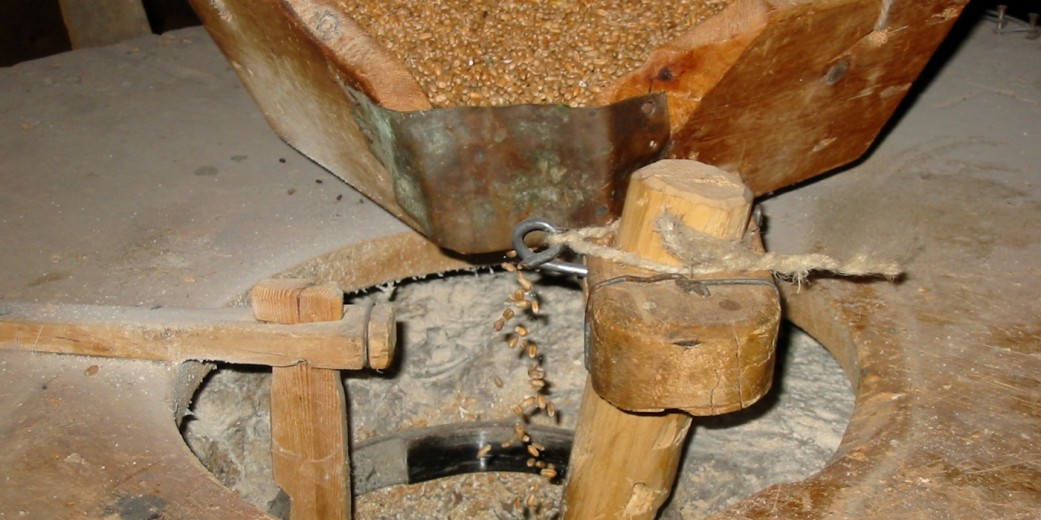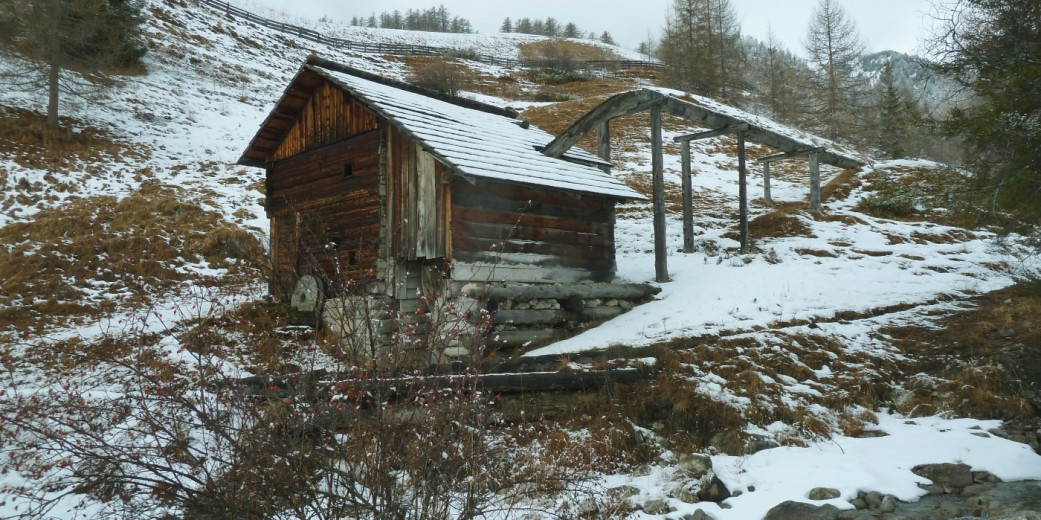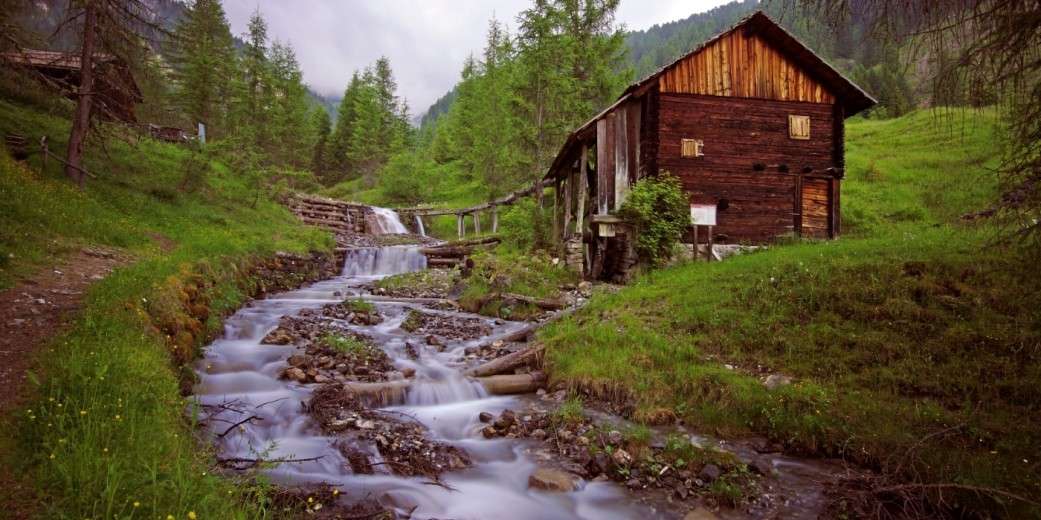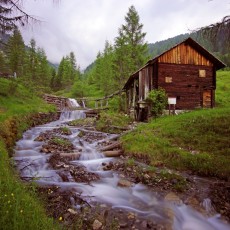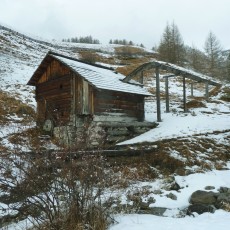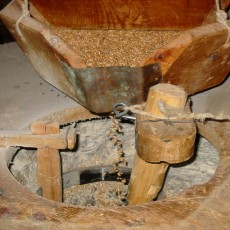Val di Morins/Mühlental Valley
Since time began, the people who inhabited this remote mountain valley have had to reflect on their resources. Another marker, and perhaps the most significant, of the self-sufficiency and economic independence of days gone by in Lungiarü is to be seen in the number of water mills in the area. Throughout the whole of South Tyrol, there are very few mountain streams with so many domestic and farm mills. The best-preserved mills are located to the south of the village on the Seresbach River, where a small valley opens out to the west. Upstream, there are eight flourmills, one after the other, like a string of pearls. After complete renovation, they are now in very good structural condition and in full working order. Very little trace remains, however, of the Venetian saws and hammer mills of the past.
As a result of a sharp decline in grain cultivation, the agricultural trend towards livestock farming and, not least, the use of streams to generate electricity, life has become very quiet here in the last 20 to 30 years in the mills of the Val di Morins/Mühlental Valley.
Cialciara – Lime kilns
Lime kilns (Lad. Cialciara), of which there are around eight or nine in Lungiarü, also bear witness to the self-sufficiency of the area in times gone by. When visiting these sites, one can see clearly that the kilns were always built far from the settlements, mainly in woodland, which also provided an abundance of wood for heating. The sites of choice were also rich in a plentiful, nearby supply of the requisite limestone. Lime was primarily burned in Lungiarü in the spring months before the work in the fields began, and also in autumn. The lime kilns were not run for commercial purposes, and served only to cover the needs of the local area for building works.



